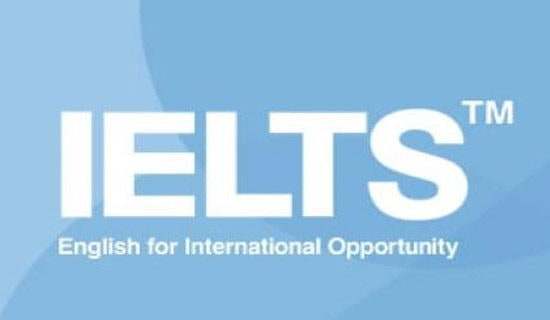- 相關(guān)推薦
雅思聽(tīng)力地圖題解題方法
雅思考試包括口語(yǔ)、聽(tīng)力、閱讀、寫(xiě)作四個(gè)部分,相對(duì)于托福或國(guó)內(nèi)其它的英語(yǔ)考試,更能夠全面鍛煉學(xué)習(xí)者的英語(yǔ)聽(tīng)說(shuō)讀寫(xiě)能力。以下是yjbys網(wǎng)小編整理的關(guān)于雅思聽(tīng)力地圖題解題方法,供大家備考。

雅思聽(tīng)力地圖題解題注意事項(xiàng):
1.抓住地圖的起始點(diǎn),尤其注意指向標(biāo)和圖例等符號(hào),它們都是代表起始點(diǎn),entrance, exit, door, gate, reception 或是聽(tīng)錄音提示,如果出現(xiàn)了Now we are standing here at…類(lèi)似句子的時(shí)候,表示的就是起始點(diǎn)。
2.迅速掃讀途中一直心系,建立已知和未知信息關(guān)系圖。
3.聽(tīng)錄音時(shí),尤其注意體現(xiàn)空間易懂的表達(dá),速記填寫(xiě)地名。
4.注意已標(biāo)出的地名,并畫(huà)出行駛路線(xiàn)。
5.注意方向,以途中說(shuō)話(huà)人前進(jìn)方向?yàn)闇?zhǔn)。
地圖題的準(zhǔn)確率和同學(xué)們對(duì)于方位詞的熟悉程度有關(guān),如果在聽(tīng)到方位詞時(shí)不能迅速作出反應(yīng)而還需要相應(yīng)的時(shí)間去考慮,勢(shì)必會(huì)影響做題的效率和準(zhǔn)確率,所以在此我們總結(jié)出了地圖題中最常見(jiàn)的方位詞表達(dá),希望同學(xué)們認(rèn)真準(zhǔn)備,以應(yīng)對(duì)未來(lái)的地圖題:
雅思聽(tīng)力地圖題解題方位詞:
表示沿著……地方走,一般用go on/along…till you meet
表示向東,南,西,北方向走,一般用go east/south/west/north
表示左轉(zhuǎn),右轉(zhuǎn)用turn left/right
表示上行(向北),下行(向南)go up/down; go back
表示在……后面,前面,旁邊,緊鄰用be located behind/in front of/beside/next to
表示相對(duì)的位置用directly opposite
表示很近用be near to…/be close to
表示在某人的左手邊或右手邊on sb’s left/right hand/side
表示在拐角處用be in corner of
表示在第一個(gè)/第二個(gè)/第三個(gè)路口處at the first/second/third crossing intersection/crossroad
表示入口/出口entrance/exit
表示后門(mén)/側(cè)門(mén)/前門(mén)用rear/side/front entrance
電梯lift/elevator
滾動(dòng)電梯escalator
前臺(tái)接待處reception dest
這些都是地圖題展開(kāi)敘述的關(guān)鍵詞,會(huì)直接關(guān)系到同學(xué)們做題的準(zhǔn)確率,希望大家都能化時(shí)間背誦,熟練使用他們。
拓展閱讀:
六個(gè)英文tips破解雅思聽(tīng)力考試
Tip 1 As in any part of the exam, there are no lost marks for wrong answers. So, if you dont know- guess!
Tip 2 All the parts of the paper are heard only once- so dont do lots of textbook listenings where they hear twice. It can be useful, however, to occasionally play IELTS exam listenings through again while they read the tape script。
Tip 3 Although the question papers will be collected in, only the answer sheets will be marked. Students can therefore write anything they like on the question sheet. In fact, making a few notes as they listen will give students a chance to guess any answers they have missed during the time given to transfer answers to the answer sheet。
Tip 4 Grammar, spelling and punctuation (e.g. capital letters) must also be correct for all answers。
Tip 5 There are things that students must get right to get the points which do not have anything to do with listening comprehension (e.g. getting grammar right, see Tip 4). These things can therefore be practiced in the classroom without even using a tape. Simply give students an answer sheet where the answers are written out wrongly (e.g. 5 words or with a common spelling mistake) and get them to correct it. Give them a strict time limit, as they wont have much time to do this in the exam. See example worksheets and Lesson Plan. Alternatively, give them a question paper with these kind of errors on it and get them to transfer the answers to the answer sheet whilst correcting any mistakes。
Tip 6 Of course, the best practice for the listening paper is to listen to as much English as possible. Students should try to listen to radio as well as watch TV, as they can’t rely on visual prompts in the exam. If they want to watch movies etc, then anything in an academic setting should include relevant vocabulary, e.g. Educating Rita or The Dead Poets Society。
【雅思聽(tīng)力地圖題解題方法】相關(guān)文章:
雅思聽(tīng)力地圖題解題步驟03-04
雅思聽(tīng)力地圖題解題技巧08-04
2016雅思聽(tīng)力技巧:地圖題03-01
雅思聽(tīng)力題型介紹及解題方法03-17
雅思聽(tīng)力地圖題詞匯07-30
雅思聽(tīng)力地圖題型的詞匯08-14
雅思備考:聽(tīng)力正確的解題步驟07-20
雅思聽(tīng)力搭配題解題思路02-23